This story from Jordan Chong about Singapore Airlines’ resumption of nonstop Singapore-New York Newark nonstop flights first appeared in the January/February 2019 magazine edition of Australian Aviation.
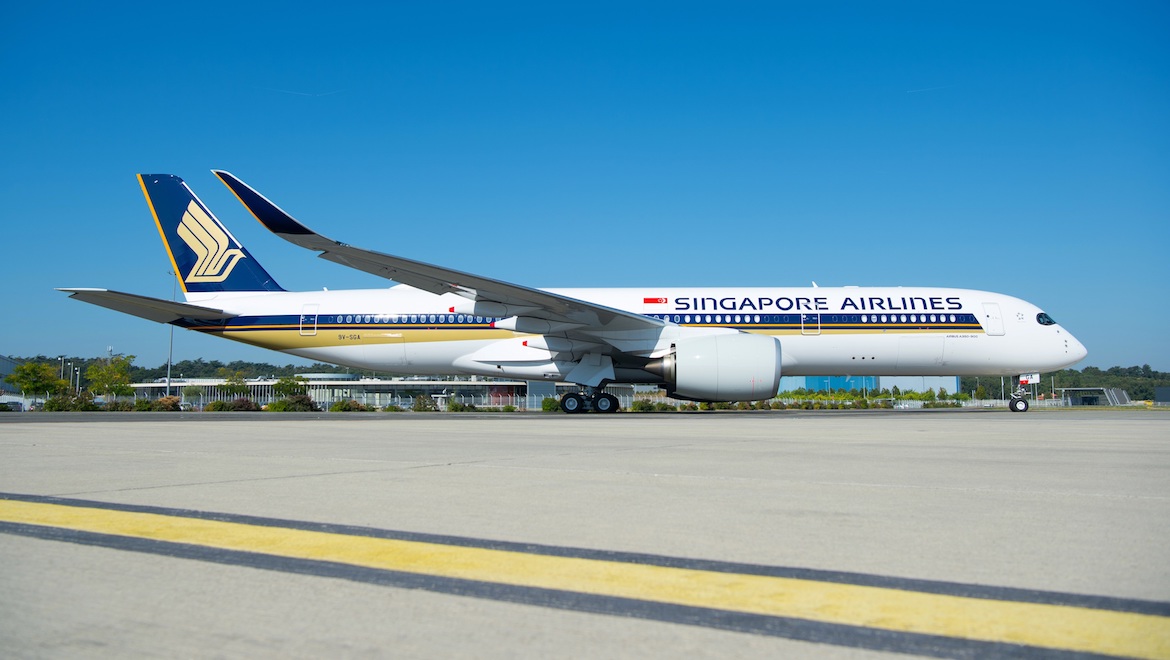
Singapore Airlines’ (SIA) nonstop flight between Singapore and New York is well and truly back, much to the delight of regular customers who had been calling for its return since the service was suspended in 2013.
The flight, which first operated in 2004 with the Airbus A340-500, was a popular choice for business travellers shuttling between two of the world’s largest financial hubs.
So there is little surprise that the resumption of the 8,285nm service from October has been well received.
“I was in New York for the launch and most of the reaction was that it’s about time,” SIA executive vice president of commercial Mak Swee Wah told Australian Aviation.
While that reaction underscored the excitement of having the service back online after a five-year absence, Mak said the route reinstatement was “about time in more ways than one”.
Most obvious is the benefit of being able to fly nonstop.
The passage of time has led to the development of a next-generation aircraft that is both capable of operating the ultra long-haul route while giving the airline a realistic prospect of profitability.
Further, the absence of a nonstop option between Singapore and New York has meant SIA ceded parts of the market to other airlines due to its reduced presence in North America. It will take time to remind everyone the flights are back and for the airline to win back those business class customers as it creates a new market for premium economy travellers.
Finally, SIA has launched a number of new cabin products designed to make these ultra long-haul services as comfortable as possible for passengers hurtling through the sky for up to 19 hours.
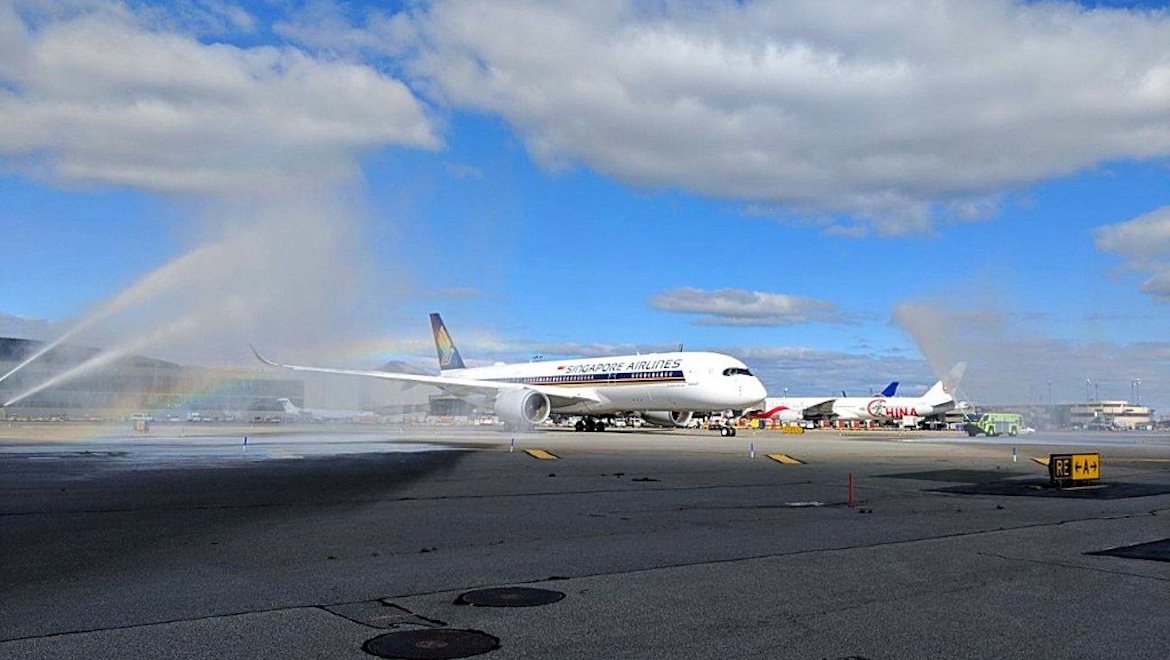
World title reclaimed
SIA resumed the non-stop service to New York Newark on October 11 2018, reclaiming the title of the world’s longest nonstop passenger flight. The airline says the flight saves passengers between four and six hours compared to its daily Singapore-Frankfurt-New York JFK service with the Airbus A380.
Flight SQ22, operated by Airbus A350-900ULR 9V-SGB, took off from Changi Airport a little after 2330 and landed at Newark Liberty Airport 17 hours and 52 minutes later.
Captain SL Leong, SIA vice president and chief pilot for the A330/A350 fleet, was one of four pilots at the controls of SQ22. Notwithstanding the interviews with invited journalists on board for the inaugural service, he says the actual flying experience was “no different from any other long-haul flight”.
“It was quite comfortable. At the end of the flight I was quite refreshed,” Captain Leong told reporters during a media briefing at the SIA Training Centre in November.
“We carry two pilots and two copilots. We work as two teams, take turns to work, take turns to sleep.
“We try not to spend more than four to five hours working at any time.”
There are three potential routes SQ22 and the reciprocal SQ21 can take.
For the inaugural flight, 9V-SGB tracked north on departure from Singapore and headed out over the South China Sea on what the airline terms the NOPAC route. Once past Japan, the A350-900ULR headed over the north Pacific near the Aleutian Islands, Alaska and Canada before making its approach into Newark.
The route took advantage of some favourable tail winds of up to 100 knots at times.
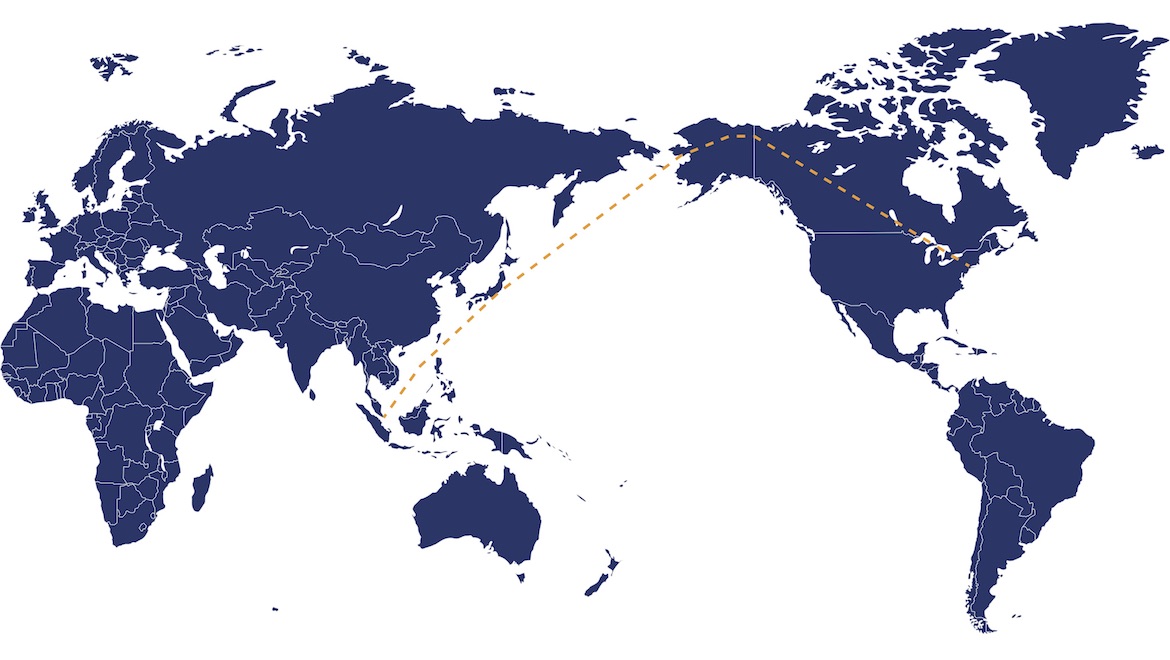
Meanwhile, it was an easterly route for the reciprocal SQ21 via the North Atlantic and flying over countries including Norway, the Russian Federation, Afghanistan and India before touching down in Singapore.
A third option involves tracking over the North Pole, traversing the Russian Federation.
Captain Leong says the distance for all three routes is not that different given that point to point, across the globe, Singapore is almost directly opposite New York.
Therefore the choice of route is all about catching the right winds.
SIA uses the Lido/Flight 4D flight planning system to determine the optimal route, based on factors such as air traffic, airspace, airports, aircraft performance data and weather.
Captain Leong said the days of people doing the flight planning by hand are well and truly over given current complicated and high-tech processes.
Instead, the system calculates the best route based on the origin and destination and aircraft type.
“The sky is not so empty as we think it is,” Captain Leong said.
“It’s full of routes and you have to fly the correct route. There are some routes, like our streets, that are one-way so you cannot go in the wrong direction.
“The computer must find the most efficient route.”
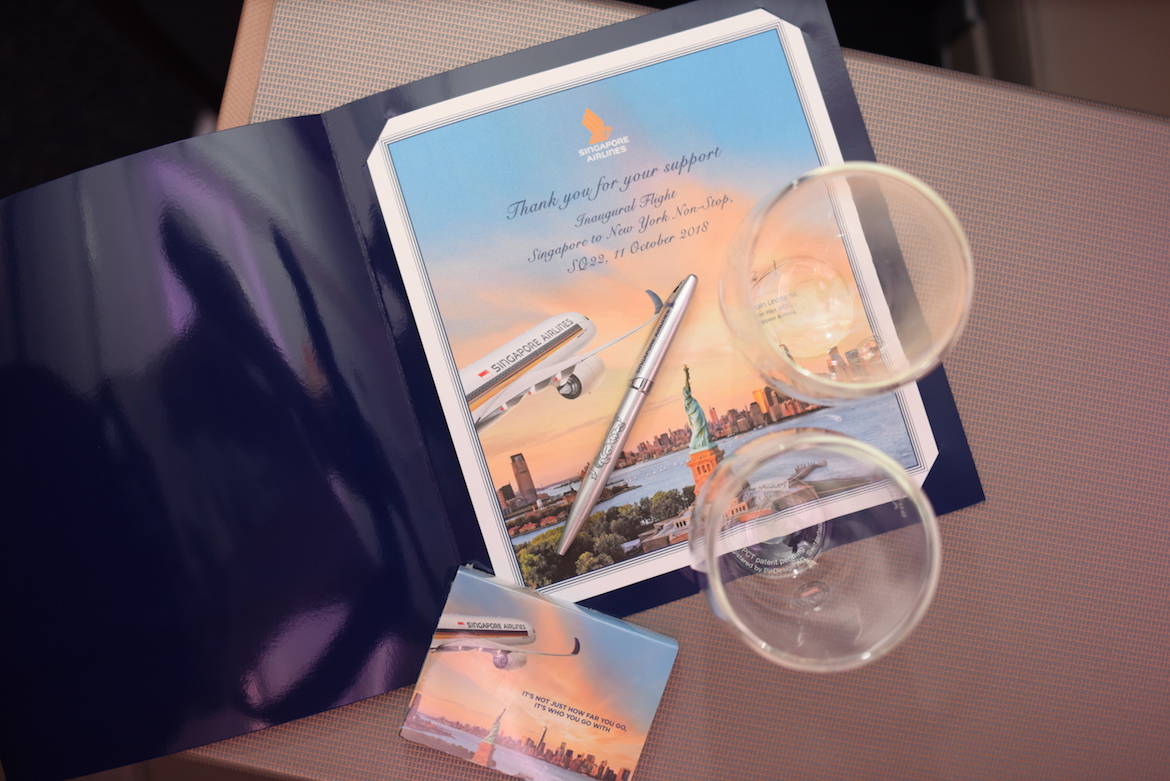
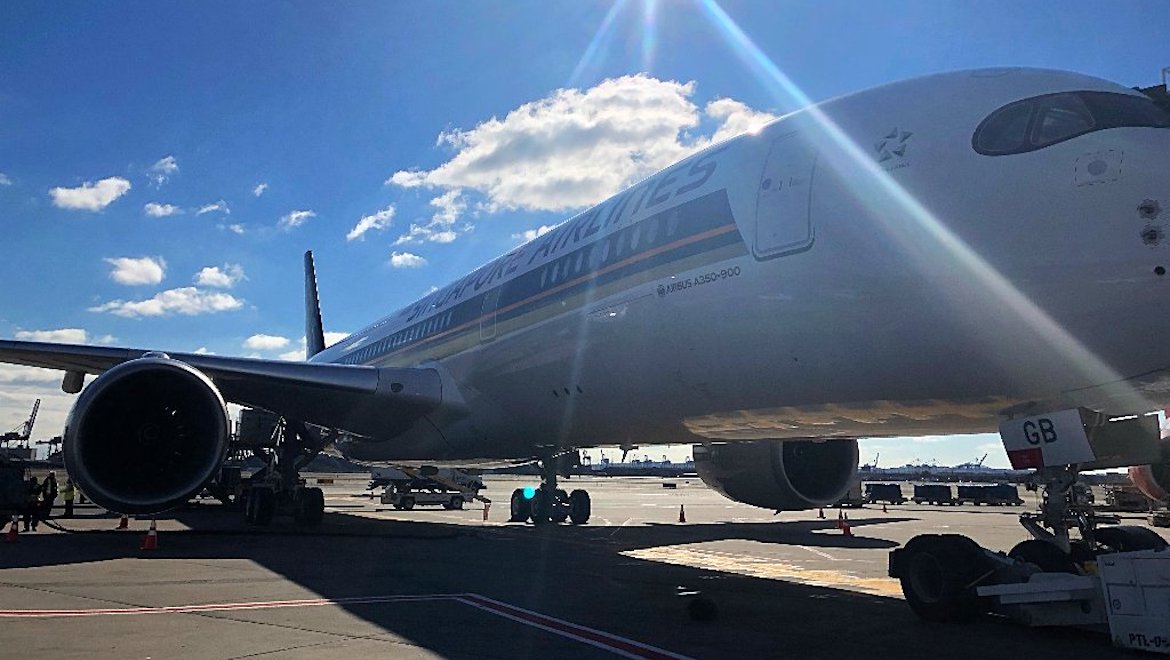
SIA has approval to operate the A350-900 fleet with extended-range twin-engine operational performance standards (ETOPS) of 240 minutes, meaning the aircraft is allowed to fly on routes that keep it within four hours of a potential diversion airport in the event of a single engine failure.
While the European Aviation Safety Agency (EASA) has certified the A350 with 330-minute ETOPS approval, the Civil Aviation Authority of Singapore (CAAS) only approves a maximum of 240 minutes.
Nonetheless, Captain Leong says 180 minutes ETOPS was normally enough for the bulk of SIA’s ultra long-haul operations.
Captain Prabhjeev Miglani, SIA deputy chief pilot for the A330 fleet, says pilots also have access to the latest weather information from the aircraft’s onboard systems to seek out the most efficient routes during the flight.
“The pilots are in contact with the ground,” Captain Miglani said.
“Secondly we have a lot of systems on board. We have an advanced weather radar system on board and that is scanning up to 600 miles in front of us.
“Yes, we sit down and it seems like we are doing nothing but there is a huge amount of work going on all the time.”
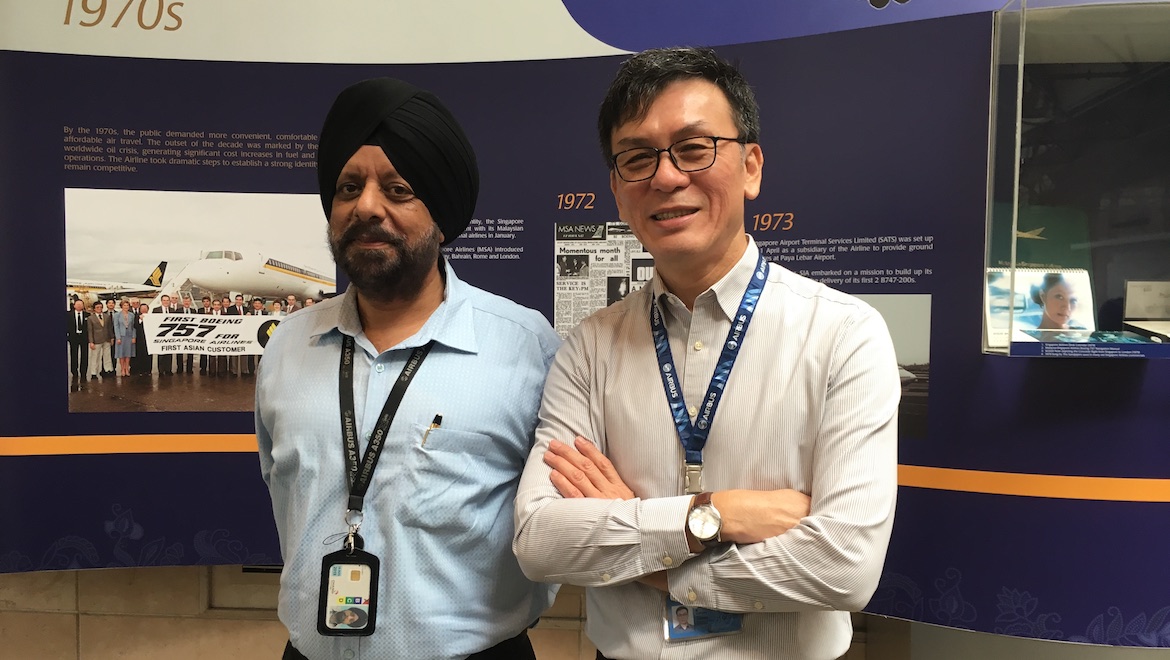
A350-900ULR versus A340-500
SIA is the second largest customer for the A350 program with 67 of the type on order.
Within that order, seven are for the A350-900ULR variant, configured with 67 business class and 94 premium economy seats for a total of 161. All seven were due to be in the fleet by the end of calendar 2018.
The aircraft has a modified fuel system that increases the fuel carrying capacity by 24,000 litres (from 141,000 litres to 165,000 litres) over the standard A350-900, without the need for additional fuel tanks.
While there are no changes to the size of the centre fuel tank, modifications to the layout of the piping and valves within have allowed for the increase.
A performance improvement package brings larger winglets, a slight twist to the wing compared with the standard A350-900, as well as changes to the flap fairing and belly fairing. Airbus says the performance improvements from the design tweaks are being applied to all in-production A350 aircraft.
The A350-900ULR also has maximum takeoff weight (MTOW) of 280 tonnes, compared with the previously certified MTOW of between 268 tonnes and 275 tonnes for the standard A350-900 variant. Airbus says the aircraft is capable of flying up to 9,700nm, or more than 20 hours nonstop.
Also, the A350-900 Airport Planning Guide published on the Airbus website shows the forward cargo compartment is deactivated on the ULR variant.
In addition to New York Newark, SIA also uses the A350-900ULR on nonstop flights from Singapore to Los Angeles and San Francisco.
SIA’s standard 253-seat, three-class A350-900s also serves San Francisco and will be used on a new Singapore-Seattle flight due to start in September 2019.
Being on the flightdeck of the A350-900ULR inaugural represented something of a highlight for Captain Leong, who was on the team that worked on the A340-500 project to establish the original 2004 to 2013 Singapore-New York Newark operation.
As ultra long-haul routes were just a concept at the opening of the century, SIA had to start from scratch to get those flights off the ground.
That involved working with regulators on the rules for fatigue, fuel reserves and air routes, among other issues, over a two-year period to get the green light.
Captain Leong says it was a very challenging and exciting time.
“The rules at that time did not permit us to fly this ultra long-haul,” Captain Leong says.
“So really we had to sit down and work with the authorities on coming up with new rules.
“I think the maximum allowed at that time was 18 hours of total duty time, which works out to about 17 hours of flying time.”
Regarding fatigue management, Captain Leong says SIA engaged a group of experts in aviation fatigue management to monitor crews with industrial grade monitors.
“For the first few flights the scientists would go to the crew’s home the night before and then fit them with the sensors and they would travel with the sensors for the next few days,” Captain Leong said.
“And then eventually, with all that data, we got approval to operate this ultra long-haul. It was really starting from a fresh sheet of paper.”
Operationally, one issue that SIA faced with the four-engine A340-500 was cold fuel temperature.
“Because we were flying for a long time in very cold air the fuel becomes very cold,” Captain Leong said.
“Most of the [A340’s] fuel is carried in the wings and the centre tank which is in the belly.
“The tips of the wings get very cold so the fuel inside becomes very cold and then, if it is too cold, it may not be usable. So we had to have some training and programs to manage this.”
The A350-900ULR has no outer tanks in the wings.
As the price of fuel rocketed towards US$150 a barrel in the mid 2000s, the fleet of five A340-500s proved uneconomic and the flights were withdrawn in 2013 and the aircraft disposed of.
Fast forward to 2017 and Captain Leong was among those associated with the previous A340-500 operations tasked with dusting off the old files and reviving the nonstop flights.
One statistic from Captain Leong sums up the difference between the two aircraft: “We are using about 100,000kg of fuel to Newark. The A340-500 was using about 160,000kg of fuel.”
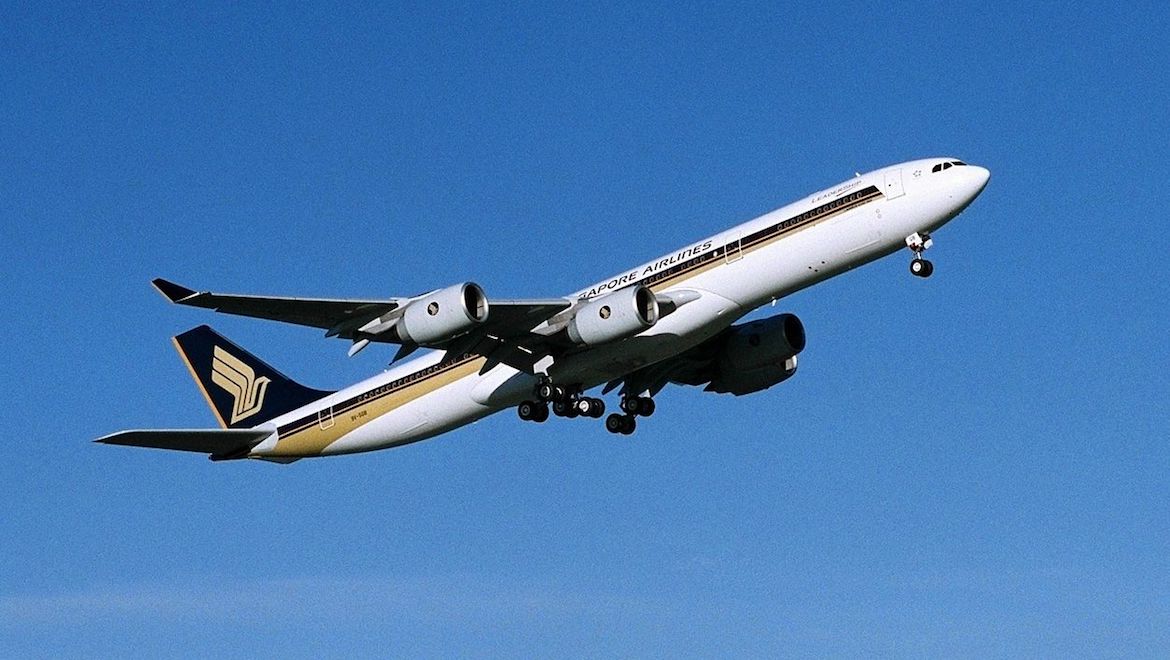
In addition to all the operational efficiencies, the A350-900ULR also offers greater passenger comfort such as larger windows, a cabin altitude of 6,000ft instead of the 8,000ft on the A340-500, and better humidity controls.
“The technology is really amazing. This A350 aeroplane is really good, very fuel-efficient and of course we have a wonderful cabin,” Captain Leong says.
His colleague Captain Miglani, who has been with SIA for more than three decades, agreed.
“It’s really a pilot’s aircraft. The systems, the interface that is there for the pilots in operating the aircraft is fantastic,” Captain Miglani says.
“It’s really a great aircraft to fly.”
Another factor in SIA’s favour is that the A350-900ULR variant is among a projected fleet of 67 A350s allowing for greater efficiency in maintenance, while pilots and cabin crew come from a common pool.
By contrast, the five A340‑500s required separate crews and maintenance support. The fleet also suffered from low utilisation given one aircraft was typically designated as an operational spare or in maintenance.
SIA chief executive Goh Choon Phong described this latest nonstop operation as a “very different proposition”.
“Truth be told, when we terminated the ultra long-range A340-500 operations, even at that point in time we were already pushing the manufacturers, the OEMs, both Boeing and Airbus, to develop something that could replace the A340-500 in a much more fuel-efficient manner,” Goh told delegates at the Association of Asia Pacific Airlines assembly of presidents in Jeju, South Korea in October.
“And we are glad that ultimately Airbus was able to give us a solution in a timeframe that we were looking at.
“The difference this time around is that the A340 was metal fuselage, four engines, very inefficient, while the A350 is carbon composite and is about 30 per cent more fuel efficient which is a big deal.
“Plus, it is part of a much bigger fleet we have on order, a firm order of 67 A350-900s, which means that the spares, the pilot common crewing, even for cabin crew, will make the operation a lot more efficient.”
Meanwhile, the legwork undertaken by SIA for the A340‑500 operation has, in part, paved the way for other ultra long-haul routes launched by other carriers such as from the Middle East to New Zealand, or Perth to London Heathrow.
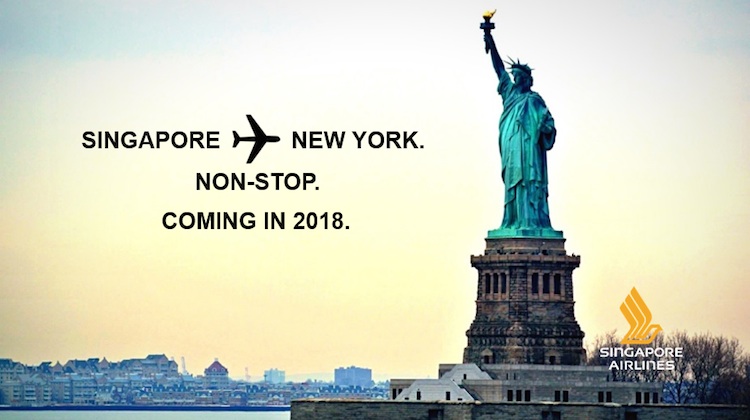
Rapid expansion in capacity
The Singapore-New York Newark and Singapore-Los Angeles flights that opened in November join a growing list of current and potentially upcoming nonstop routes between South-East Asia and the United States.
SIA’s own Singapore-San Francisco service started in 2016.
United flies twice daily to Singapore from San Francisco with Boeing 787-9s. (The airline previously offered one daily nonstop flight to Singapore from Los Angeles and San Francisco but ended the Los Angeles service at the end of October 2018.)
And Philippine Airlines has three routes in operation, flying from its Manila hub to Los Angeles, New York JFK and San Francisco.
An October 2018 research note from CAPA – Centre for Aviation said there would be 70 weekly nonstop flights between South-East Asia and the continental United States in December 2018, compared with 39 a week at the start of October 2018.
The aviation think-tank cautioned that low initial yields would make it challenging to sustain the flights, particularly given the recent rise in fuel prices.
Highlighting the extremely competitive nature of the Singapore-United States market, CAPA noted SIA was offering SGD$1,328 fares in premium economy on Singapore-Los Angeles and SGD$1,428 on Singapore-New York Newark, which was “lower than the cheapest regular economy fares offered by almost all of the other airlines offering one-stop products in this market”.
It described some of the fares on offer as “alarmingly low”.
“SIA should have a competitive advantage as it will be the only airline offering a nonstop service from Singapore to Los Angeles and New York,” CAPA said.
“However, the fares that have been offered in the first few months of sales suggest that SIA is unable to command a premium – at least, not in the premium economy cabin. The decision to go with such a large premium economy cabin (94 seats) could be impacting its pricing ability.”
Looking ahead, the CAPA research note indicated other airlines could look to enter the market.
“Thai Airways is considering nonstop flights from Bangkok to the US west coast, which is within range of its existing 787s and A350s,” CAPA said.
“Thai Airways suspended nonstop services (using A340-500s) between Bangkok and Los Angeles in 2012. It dropped Bangkok-New York nonstop services in 2008, but is not likely to resume this route.”
A nonstop flight from Vietnam to the United States could also be on the cards, CAPA said.
SIA’s Mak says the US market is “running hot” at the moment.
“The US economy is doing well so I am sure people see a lot of opportunities there and all airlines are looking for places to grow,” Mak says.
“Our business is such that when times are good people put in a lot … hopefully it will find its own level after a while.”
For SIA the new batch of nonstop flights restores the airline’s footprint in the United States.
Asked about the premium economy fare issue during the early initial months of sales, Mak says pricing is never static and is set in response to supply and demand.
“It’s a fact that premium economy is well accepted in many markets but for some segments it is still not so well known so people still think it is either economy or business. So we are telling people that there is a good product, premium economy,” Mak said.
“As in anything, when you want to promote the product and you want to entice them or encourage them to try, you give them an interesting price and let them try it out and then people will find that yes, actually this one is a good product and maybe worth a few dollars more.
“We hope that the combination of the flight and the service and the product will be one that will make this viable.
“People who prefer to save time flying to the US will be prepared to pay a little bit more. So if we get that formula right we should be able to fill up what we have.”
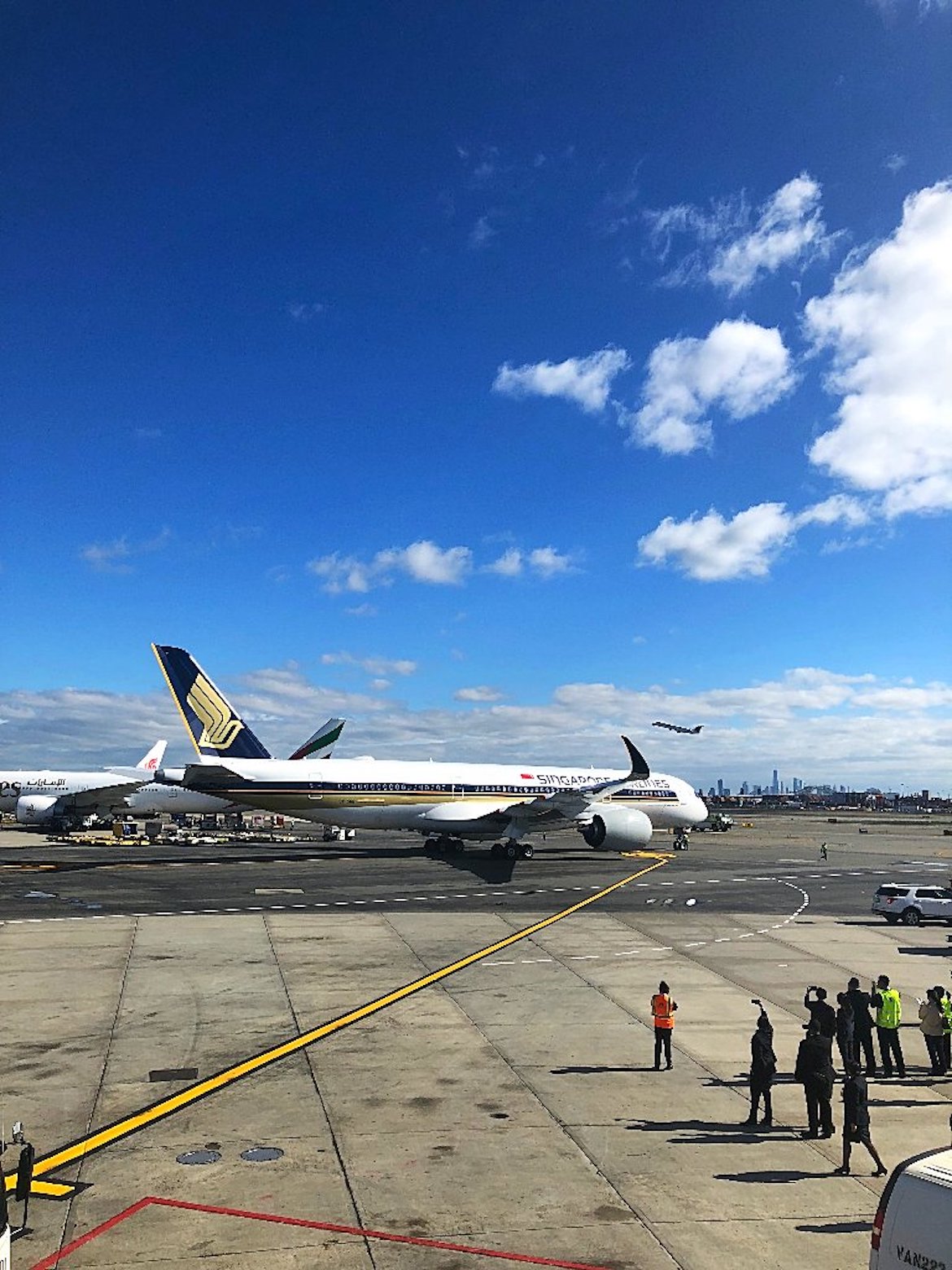
Countering a volatile fuel price
Oil prices have had a volatile 2018. In October, they reached four-year highs as trade and geopolitical tensions sent jitters through commodities markets. However, just over a month later crude was at its lowest level in a year as fears of reduced supply from the Iran sanctions proved overblown.
Fuel is typically an airline’s second largest cost after staff.
Mak said fuel prices are a “nuisance but still bearable”, adding that the business case for SIA’s North American nonstop flights is “not predicated on one fuel price”.
Further, the efficiency of the A350‑900ULR and fleet commonality meant there was more of a buffer to absorb fuel price rises.
“As in any business case you do a range and we know that in this business fuel prices do swing,” Mak said. “Of course it is higher than what we would like it to be.
“At the height of the last fuel hike it was $147 a barrel. Today it is $83. I don’t want to tempt fate and say ‘c’mon bring it on’. Two weeks ago it was $95.”
SIA has also returned to some markets lost to other carriers since the closure of the A340-500 operation.
For example, the airline has been promoting the new nonstop flights to North America in Perth from where travellers might be drawn to a seamless transit at Changi Airport rather than a domestic-to-international connection on Australia’s east coast.
The likes of Cathay Pacific or the Gulf carriers have also been active in the Perth-North America market.
Mak said SIA’s expansion into markets such as India also has opened up new connectivity.
This is on top of existing markets such as Indonesia and Malaysia, which have traditionally provided good feed to SIA’s global network.
“What has changed between now and say five to seven years ago is, also, that we have built a lot more services between India and Singapore, Perth and Singapore,” Mak says.
“That has helped to feed into this service and therefore gives us a much broader market base than Singapore alone.
“Now we look at it, it does open up quite a few new markets which maybe didn’t feature in our original calculations.
“I think the way aircraft fly nobody knows whether they are flying east or west, they just want the best connection, the most comfortable way. And so they find that our flight connects well and we like to think that it is a product they like.”
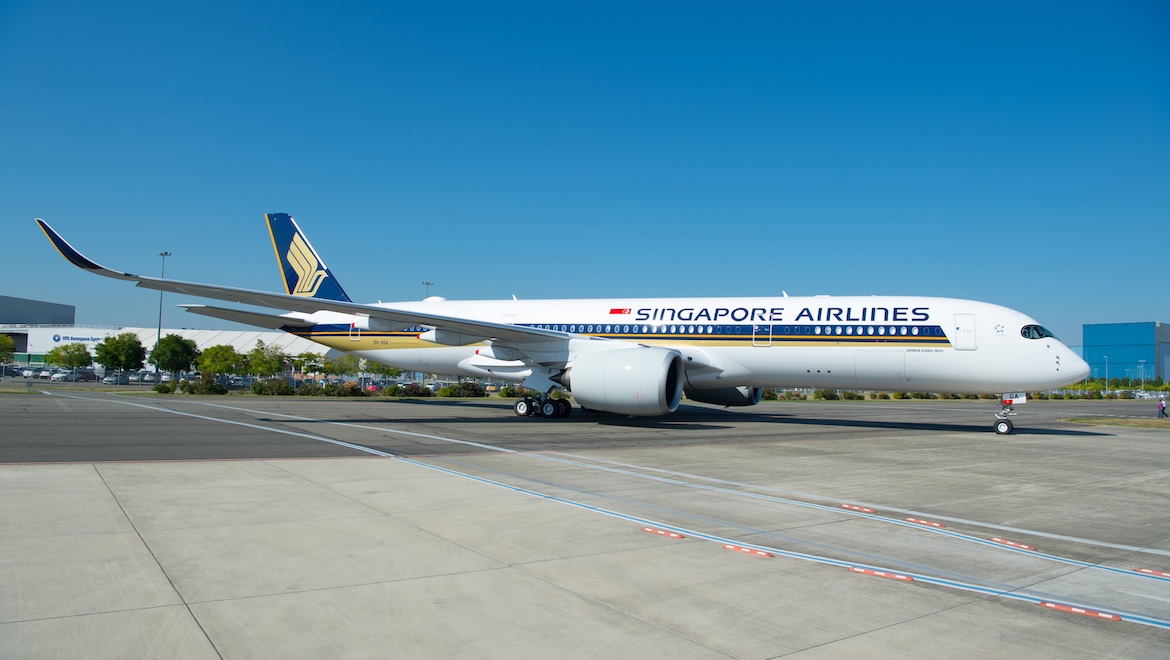
Inflight service
SIA’s nonstop flights to North America feature meals developed in partnership with Canyon Ranch, a United States-based health and lifestyle company.
The dishes, according to SIA food and beverage director Antony McNeil, are designed to support, for example, mobility with natural ingredients such as turmeric and ginger.
“The experience so far we’ve had really positive feedback from the people that have flown Newark to Singapore and Singapore to Newark in the last four weeks,” McNeil told reporters during a visit to the SATS inflight catering centre in Singapore in November.
“So much so that we are going to go back to Tucson in January to go and do another redevelopment because we feel that of the 32 meals or dishes that you have here today we need to be able to offer more because people are excited about the program.
“We want to be able to go back and redevelop more dishes, more meals, not only for the Newark sector but for the new long-haul flights going through to Los Angeles, San Francisco and, as recently announced, to Seattle next year.”
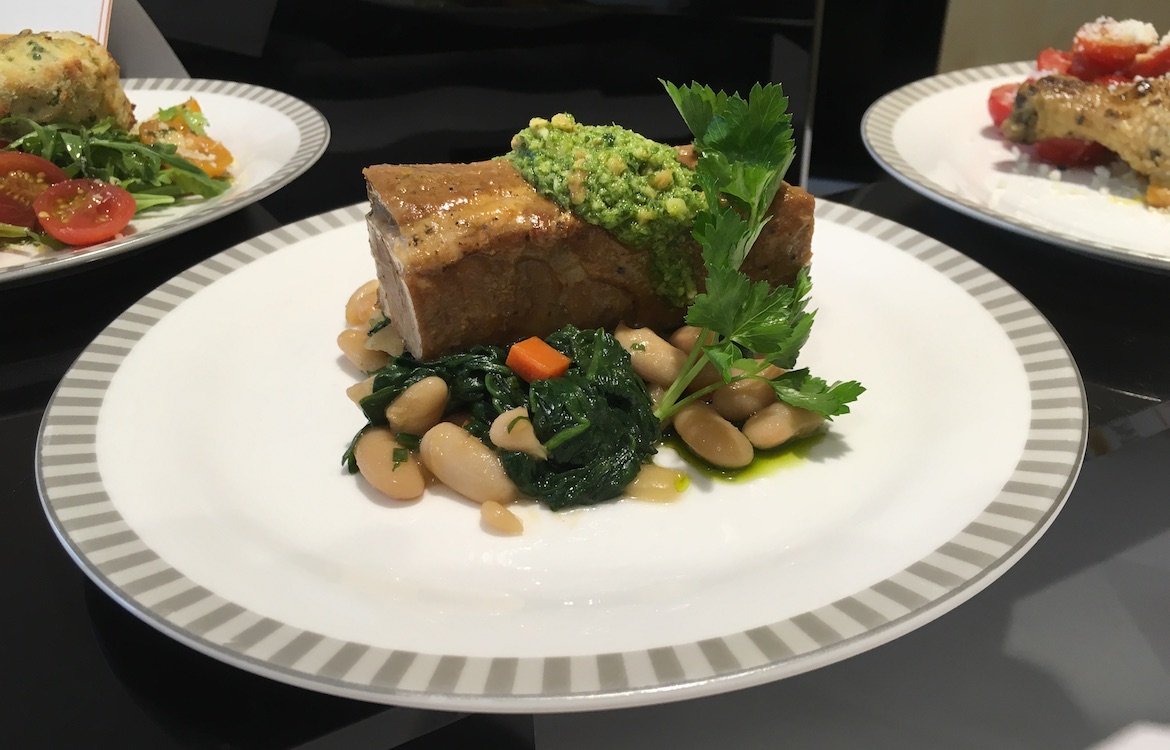
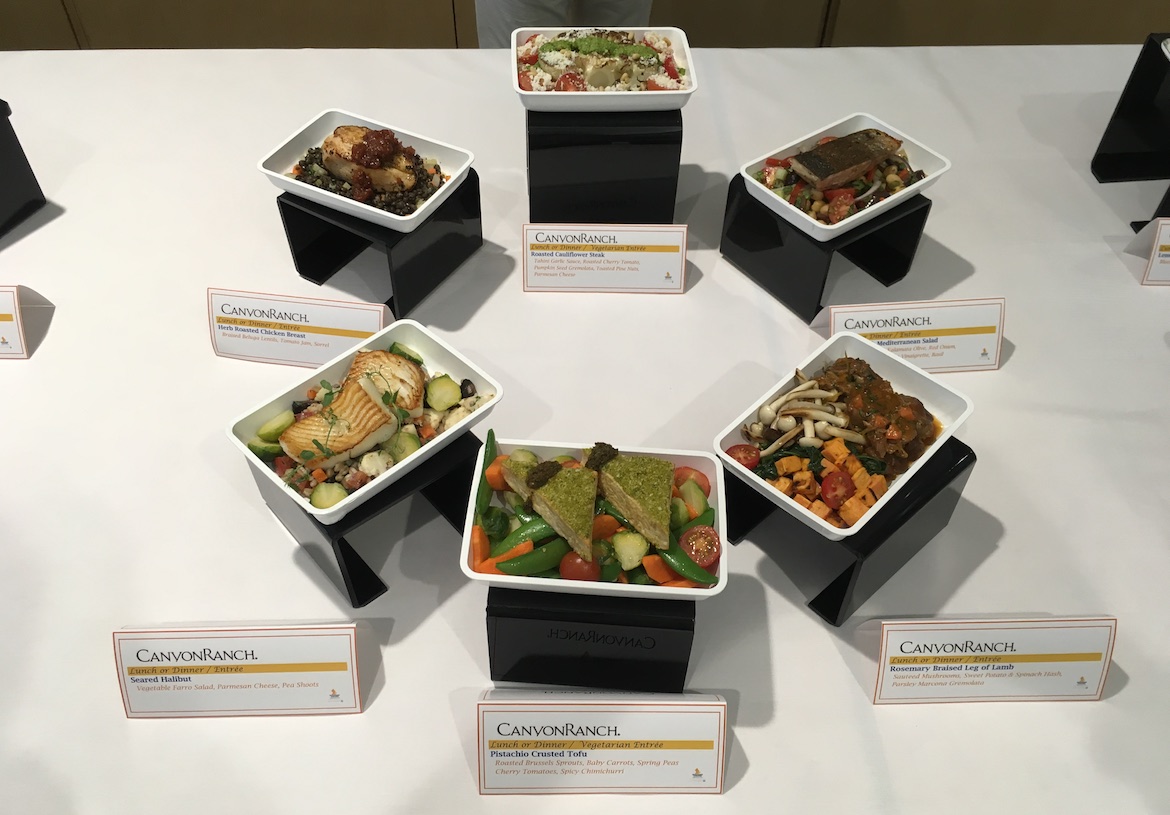
Other elements of the passenger experience include the inflight entertainment system, the lighting and temperature, the cabin layout and, of course, the seats.
While the airline did consider the introduction of a bar or lounge, as well as having a shower on board, SIA vice president for product innovation Ng Yung Han said the cabin design was driven by what the airline’s passengers valued most.
And this was maximising the seating area for passengers.
“We look at customer feedback. We look at trends in the market. We look at the alternatives out there, the competition and so on,” Ng said.
“What we asked our passengers was: do you prefer to have a common lounge or how important is a common lounge space on board? Or would you rather I increase your personal space slightly?”
The answer was more space and SIA responded.
One example is in the final three rows of the premium economy cabin at the rear of the aircraft. Due to the narrowing of the fuselage, the airline had the choice of installing a narrower seat to maintain the eight-abreast layout.
In the end, SIA chose a 1-4-1 configuration for those three rows and added a storage bin beside the six single seats by the window.
Tony Sio, head of marketplace surveillance, market technology at Nasdaq, flew on the SQ21 from New York to Singapore in premium economy in mid-November. He says he enjoyed the experience.
“The premium economy seat had plenty of legroom and the meal choices were appealing,” the New York-based Sio told Australian Aviation.
“I also found the air to be much more natural and less dry on the A350 compared with older aircraft.”
However, Sio says the departure time out of New York Newark was not ideally suited to business travellers.
“Leaving New York in the early morning and then arriving in Singapore in the evening the next day means you essentially miss two days’ work,” Sio said.
“I could take a one-stop flight that leaves New York at the end of the work day and arrive in Singapore in the morning.”
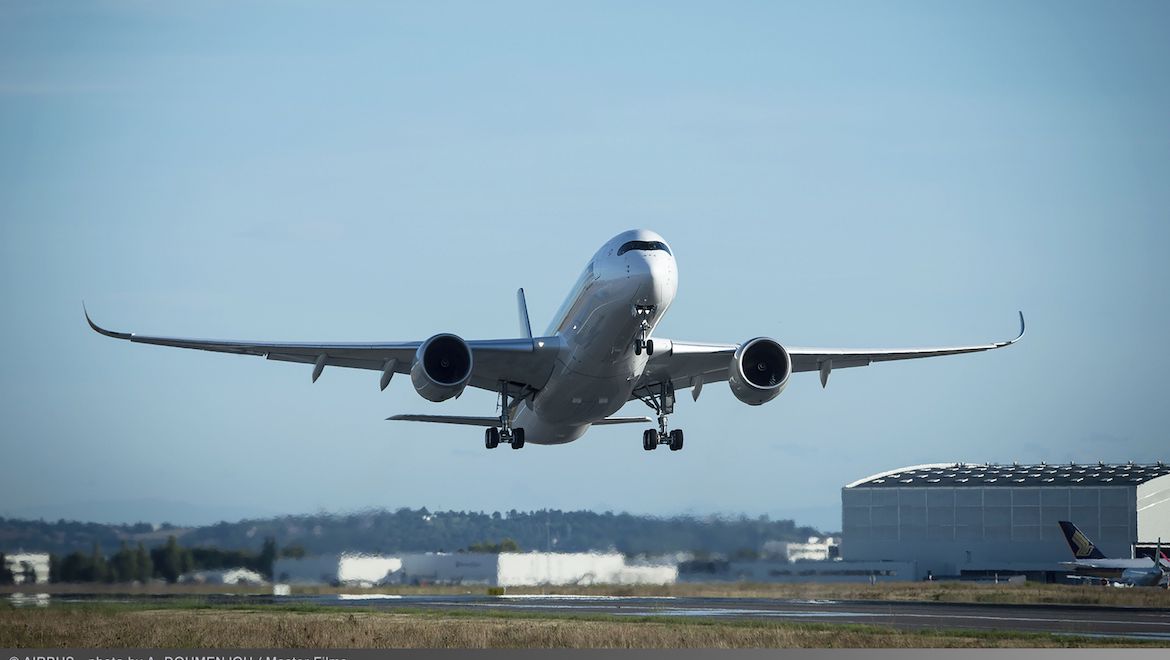
For SIA cabin crew member Rany Razia, who was on the inaugural service from Singapore to New York Newark, being a part of history was a special moment.
She said it was great to be accompanied on the first flight by some cabin crew members who had been on the previous A340-500 service because they could offer advice about how to manage these ultra long-haul services.
“They gave us some tips: how to run the service; how to manage the passengers. It was good for us,” Razia told reporters.
Razia said preparation is the key to how she copes with working such a long sector.
This includes finding time for some exercise and an afternoon nap before the midnight SQ22 departure from Singapore, as well as a thorough skin care routine.
“I wake up in the early morning. Normally I wake up by about seven or eight o’clock.
“I do some exercise in the afternoon to make me a bit tired so I can have a rest.
“My skin care routine is very thorough before and after the flight. Before the flight itself, I make sure that my skin is totally hydrated. I have to invest in good products.”
And on the aircraft itself, Razia said a busy flight is actually a good thing as it keeps the body moving and aids in blood circulation.
SIA has 13 cabin crew on its A350‑900ULR: seven covering business class and six in the premium economy cabin. They are given at least four hours rest during the flight.
All get two nights on the ground in New York before flying home. Meanwhile, they are guaranteed 48 hours and three nights in Singapore after operating the reciprocal SQ21.
SIA pilots get three nights’ rest after operating the flight to New York compared with a one-night stay in Sydney or two nights for a Singapore-Frankfurt sector.
VIDEO: A look at how Singapore Airlines celebrated the resumption of nonstop Singapore-New York Newark flights from the airline’s YouTube channel.
This story first appeared in the January/February 2019 magazine edition of Australian Aviation. To read more stories like this, become a member here.










